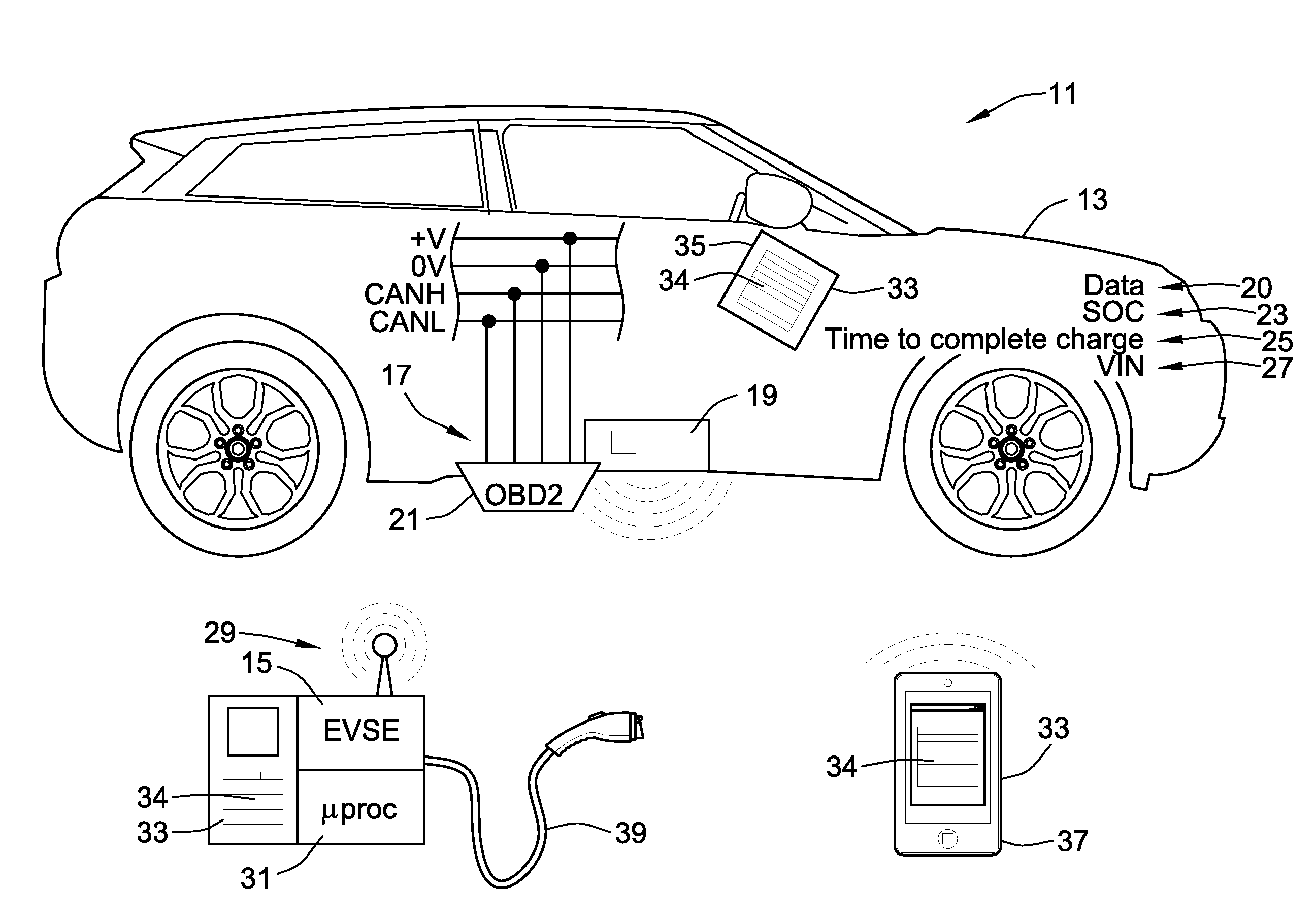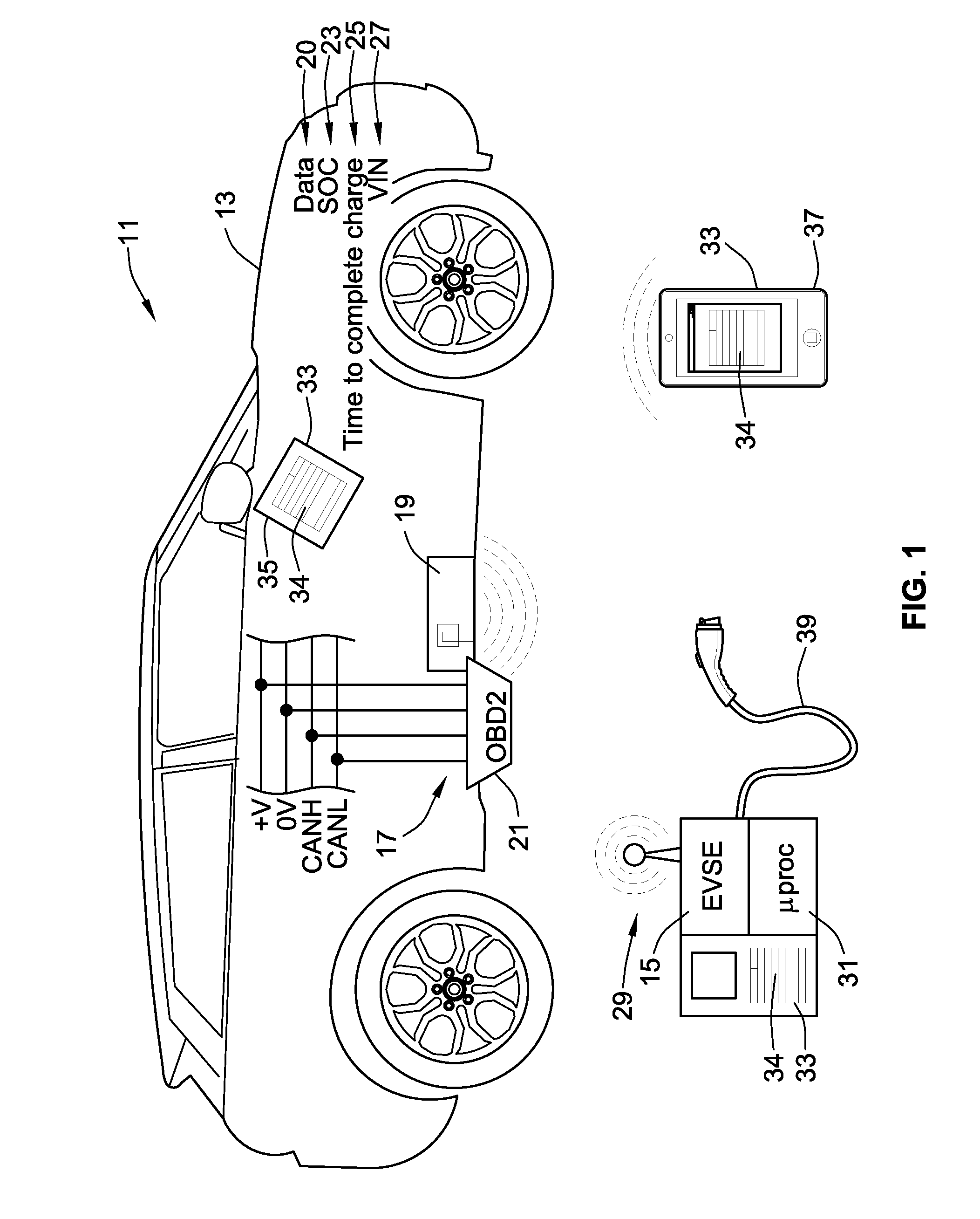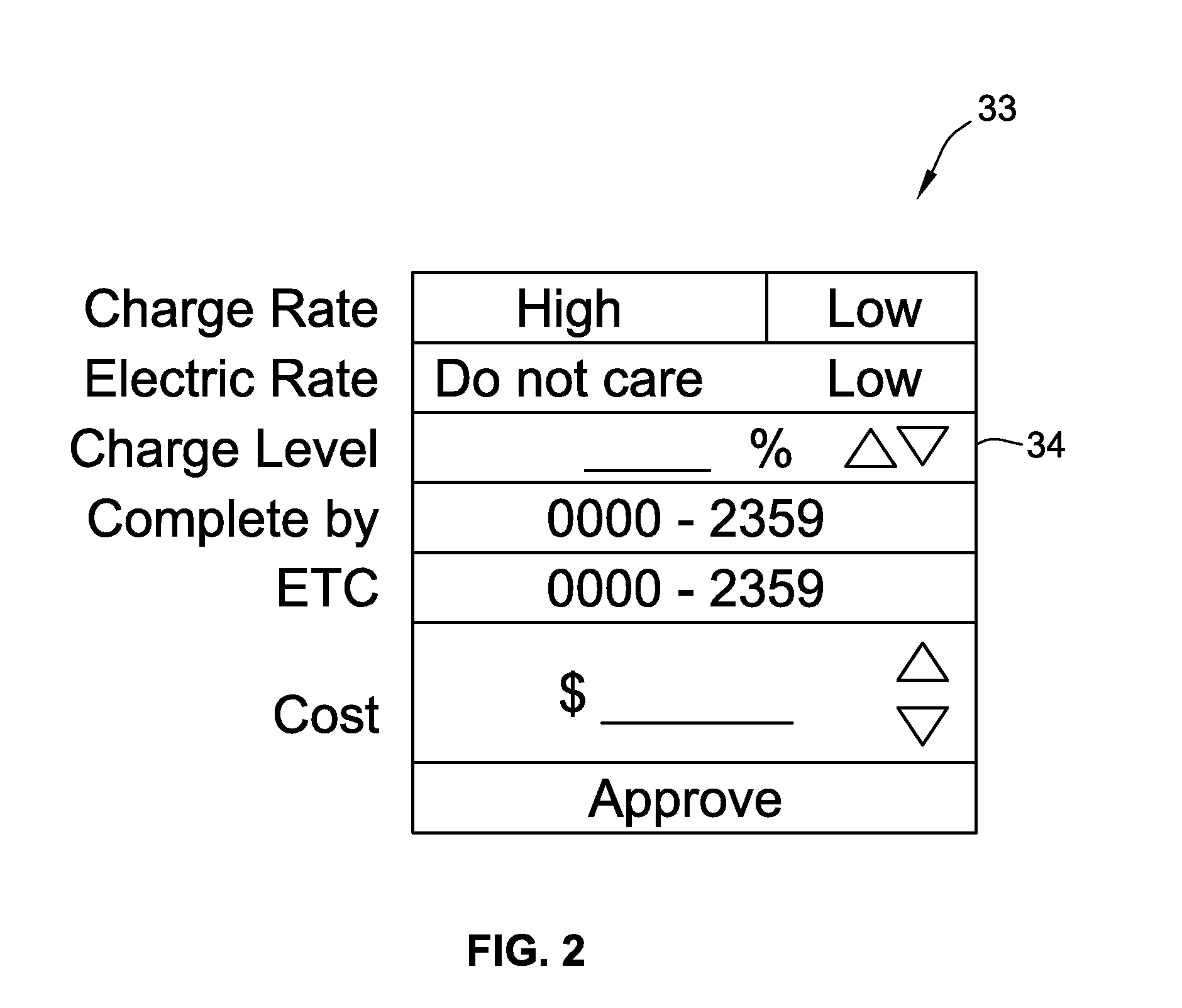Direct Communications System for Charging Electric Vehicles
a technology of direct communication and electric vehicles, applied in the direction of visible signalling systems, instruments, transportation and packaging, etc., can solve the problems of few if any standards for ev to evse communication, charging stations thus cannot conveniently acquire vehicle information, and many desired or beneficial functions are not possible or widely availabl
- Summary
- Abstract
- Description
- Claims
- Application Information
AI Technical Summary
Benefits of technology
Problems solved by technology
Method used
Image
Examples
Embodiment Construction
[0017]FIG. 1 illustrates a direct communications system 11 between an EV 13 and an AC-charging EVSE 15. As discussed above, the present invention is especially well suited for the present infrastructure of EV 13 charging in the US which is an AC-based SAE standard with two charging levels. As known in the art all US cars and light trucks have been equipped with a OBD-II (sometimes “OBD2”) sensor and data bus system 17 which has been mandatory since 1996 in US on all cars and light trucks. The OBD2 system 17 operates on the well known CANBUS protocol. The EV 13 is equipped with an EV transmitter unit 19 with a connection 21 adapted to connect to the existing data bus 17 of the vehicle 13 and which reads vehicle data including at least one of: SOC 23, time to charge completion 25, charge voltage, charge current, VIN 27, and cable lock state, and is equipped with a low power wireless transmitter 19 such as BLUETOOTH for transmitting vehicle data. Such transmitter units at this writing ...
PUM
 Login to View More
Login to View More Abstract
Description
Claims
Application Information
 Login to View More
Login to View More - R&D
- Intellectual Property
- Life Sciences
- Materials
- Tech Scout
- Unparalleled Data Quality
- Higher Quality Content
- 60% Fewer Hallucinations
Browse by: Latest US Patents, China's latest patents, Technical Efficacy Thesaurus, Application Domain, Technology Topic, Popular Technical Reports.
© 2025 PatSnap. All rights reserved.Legal|Privacy policy|Modern Slavery Act Transparency Statement|Sitemap|About US| Contact US: help@patsnap.com



